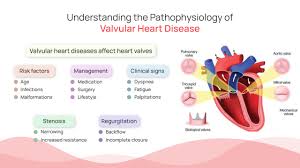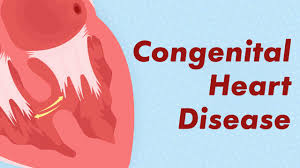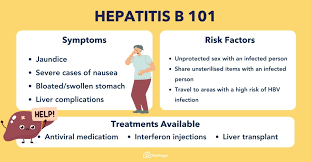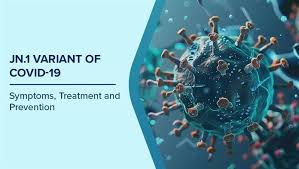
Table of Contents
Valvular Heart Disease (VHD) refers to damage or malfunction of one or more of the heart’s four valves — mitral, aortic, tricuspid, and pulmonary. These valves ensure blood flows in the right direction. If they don’t open or close properly, the heart has to work harder, leading to complications such as heart failure, stroke, or sudden cardiac arrest.
Globally, more than 100 million people are affected by VHD, with rheumatic fever (from untreated strep throat infections) being a major cause in developing countries, and age-related degeneration a major cause in developed countries.
🔎 Causes / Risk Factors
Main Causes:
- Congenital defects – Present at birth (e.g., bicuspid aortic valve).
- Rheumatic fever – Untreated throat infections causing long-term valve damage.
- Age-related degeneration – Calcium buildup leads to valve stiffening (common in elderly).
- Endocarditis – Infection of heart valves by bacteria.
- Heart attack or other cardiac conditions – Can damage valves over time.
Risk Factors:
- Family history of valve disease.
- High blood pressure & cholesterol.
- Diabetes and obesity.
- History of strep throat infections not treated with antibiotics.
- Use of certain medications (e.g., diet pills that affect valves).
⚠ Common Issues / Symptoms
Symptoms may not appear until the disease becomes advanced.
General Symptoms of Valvular Heart Disease:
- Shortness of breath, especially on exertion.
- Fatigue and weakness.
- Chest pain or tightness.
- Heart palpitations (rapid or irregular heartbeat).
- Swelling of ankles, feet, or abdomen.
- Dizziness or fainting spells.
Types of Valve Problems:
- Stenosis: Valve doesn’t open fully → reduced blood flow.
- Regurgitation (insufficiency): Valve leaks → blood flows backward.
- Prolapse: Valve flaps bulge backward (often mitral valve).
📊 Table 1: Myths vs Facts
| Myths | Facts |
|---|---|
| Only elderly people get valve disease | Even young people with rheumatic fever or congenital defects can have it |
| Exercise causes valve disease | Exercise strengthens the heart; valve disease is not caused by exercise |
| Surgery is the only treatment | Many cases are managed with medications and monitoring |
| Valve disease is rare | Millions worldwide live with it, often undiagnosed |
| If symptoms disappear, the disease is gone | Symptoms may fluctuate, but the condition persists |
📋 Table 2: Do’s and Don’ts
| Do’s ✅ | Don’ts ❌ |
|---|---|
| Get regular heart check-ups (especially if at risk) | Ignore chest pain, breathlessness, or palpitations |
| Treat sore throats (strep infections) promptly | Self-medicate without diagnosis |
| Follow prescribed medications (blood thinners, BP meds, diuretics) | Stop medicines suddenly |
| Maintain a heart-healthy lifestyle (diet, exercise, weight control) | Smoke or consume excessive alcohol |
| Seek early treatment if pregnant and have valve disease | Delay check-ups until symptoms worsen |
🌱 Prevention / Awareness Tips
- Early treatment of strep throat with antibiotics to prevent rheumatic fever.
- Regular cardiac screening for people with family history or past infections.
- Maintain healthy lifestyle – Balanced diet, exercise, no smoking.
- Control risk factors – Manage diabetes, BP, and cholesterol.
- Awareness during pregnancy – Women with valve disease should plan pregnancy with medical advice.
- Dental hygiene – Poor oral hygiene increases risk of bacterial endocarditis.
💊 Treatment / Care
Treatment depends on severity and valve affected:
- Medications:
- Diuretics to reduce fluid buildup.
- Blood thinners to prevent clots.
- Beta-blockers or ACE inhibitors to ease heart strain.
- Medical Procedures:
- Balloon valvuloplasty – Opens narrowed valves.
- Valve repair surgery – Fixes damaged valve.
- Valve replacement – Damaged valve replaced with mechanical or biological prosthetic valve.
- Lifestyle Care:
- Low-salt diet to reduce fluid retention.
- Avoid heavy exertion unless cleared by doctor.
- Regular follow-ups for heart function monitoring.
📖 Case Study / Real-Life Example
In India, rheumatic fever is still a major cause of valve disease. A study from AIIMS, Delhi found that 1 in 100 school children had signs of rheumatic heart disease, mostly due to untreated throat infections. Early antibiotic treatment and school-based awareness programs reduced new cases significantly.
In contrast, in the U.S. and Europe, aortic stenosis (valve narrowing due to age-related calcification) is the most common form, showing how different regions have different causes.
❓ FAQs
Q1. Can valvular heart disease be cured with medicines?
A1. Medicines help manage symptoms, but surgery may be needed in severe cases.
Q2. Is surgery always necessary?
A2. No. Many mild/moderate cases are managed with medication and monitoring.
Q3. What is the survival rate after valve replacement?
A3. Most patients live long, healthy lives after surgery, especially with proper care.
Q4. Can children develop valve disease?
A4. Yes, due to congenital defects or untreated rheumatic fever.
Q5. Is pregnancy risky with valve disease?
A5. Yes, but with proper treatment and monitoring, many women deliver safely.
Q6. Can exercise help in valve disease?
A6. Light to moderate exercise helps, but always consult a cardiologist before intense workouts.
🏁 Conclusion
Valvular Heart Disease is serious but treatable. With early detection, lifestyle changes, proper medications, and timely medical procedures, patients can lead healthy lives.
💡 Remember: A sore throat today could save your heart tomorrow. Treat infections early, live heart-healthy.


